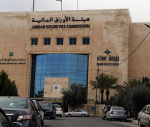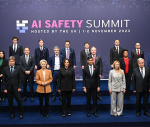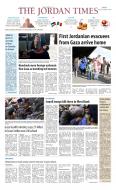You are here
The new Middle East in a multi-polar world: Challenges and opportunities
Sep 05,2023 - Last updated at Oct 29,2023
The Middle East has long been a crucible of history, where ancient civilisations flourished, empires rose and fell and conflicts simmered beneath the scorching desert sun. In recent years, the region has entered a new phase of transformation, one defined by shifting power dynamics in a multi-polar world order. As the world watches, the new Middle East emerges as a complex landscape filled with challenges and opportunities.
In intricate international relations, the concept of multi-polarity is reshaping the world's power dynamics. Gone are the days when a single superpower monopolised global affairs. Today, the emergence of multiple centres of power, be it the United States, China, Russia or regional actors, paints a complex and nuanced picture. While multi-polarity offers the promise of a more balanced world order, it also brings forth a set of formidable challenges that demand our immediate attention.
For much of the 20th century, the Middle East was characterised by the dominance of superpowers, chiefly the United States and the Soviet Union during the Cold War. The region's vast oil reserves made it a focal point of geopolitical competition. The power vacuum left by the collapse of empires and colonial rule also fuelled regional conflicts and rivalries.
However, the post-Cold War era ushered in a new chapter. The unipolar moment, with the United States as the undisputed superpower, led to interventions in Iraq, Afghanistan and Libya, fundamentally altering the Middle East's political landscape. These interventions, often marked by chaos and unintended consequences, fuelled the rise of non-state actors and sowed the seeds of regional instability.
Today, the world is witnessing a return to multi-polarity, characterised by the emergence of new power centres. China's economic ascendance, Russia's assertiveness and the reassertion of regional powers, like Iran and Turkey, are reconfiguring the Middle East's geopolitical chessboard. These shifts are reshaping alliances and introducing fresh dynamics.
China's Belt and Road Initiative (BRI) has gained traction in the region, offering infrastructure investment and economic opportunities. Russia's military involvement in Syria has established Moscow as a key player in regional conflicts. Meanwhile, Iran's influence extends through proxies in Iraq, Syria, Lebanon and Yemen, challenging traditional power structures.
Yet, the multi-polar world order in the Middle East is not without its challenges. The region remains beset by unresolved conflicts, sectarian tensions and terrorism. The Syrian civil war, Yemeni crisis and Israeli-Palestinian conflict persist, while new fault lines emerge between Saudi Arabia and Iran.
Multi-polarity signifies a world where influence and decision-making are shared among several major actors. This transition is driven by various factors, including the rise of China as an economic giant, the resurgence of Russia on the international stage and the relative decline of Western dominance. It presents both opportunities and obstacles that reverberate across all corners of the globe.
The involvement of multiple actors with differing interests can complicate efforts to broker peace and stability. The risk of proxy conflicts, as witnessed in Yemen and Syria, remains high. Furthermore, the resurgence of great-power competition in the region can exacerbate these tensions.
Multi-polarity is not inherently negative; it is a natural consequence of a changing world. However, how we navigate this shift will determine whether it leads to global instability or greater balance and cooperation. The challenges are considerable, but with diplomacy, collaboration and a shared commitment to international order, we can harness the potential of multi-polarity to address the pressing issues of our time and build a more equitable and secure world for all.
Amid these complexities, the new Middle East offers opportunities for regional actors to assert their role. Nations like Turkey and Egypt are reevaluating their roles and seeking to play a more significant part in shaping the region's future, mainly after the Abraham Accords, which normalised relations between Israel and several Gulf states.
The new Middle East, shaped by multi-polarity, presents a mixed bag of challenges and opportunities. The region's historical and cultural significance, coupled with its energy resources, ensures that it will remain a focal point of global attention. Navigating this complex landscape will require adept diplomacy, regional cooperation and international engagement.
The lessons of recent history, marked by interventions and power struggles, should guide policymakers towards a more collaborative and inclusive approach. Regional actors must seek to address the root causes of conflicts, promote economic development and foster cultural exchange. The multi-polar world order in the Middle East necessitates innovative solutions and a commitment to shared interests if the region is to realise its potential and overcome its challenges. In this ever-changing landscape, the new Middle East's story is still being written, and its ending remains uncertain.
- Popular
- Rated
- Commented
Nov 03, 2023
Nov 03, 2023
Oct 31, 2023
Nov 03, 2023
Newsletter
Get top stories and blog posts emailed to you each day.











